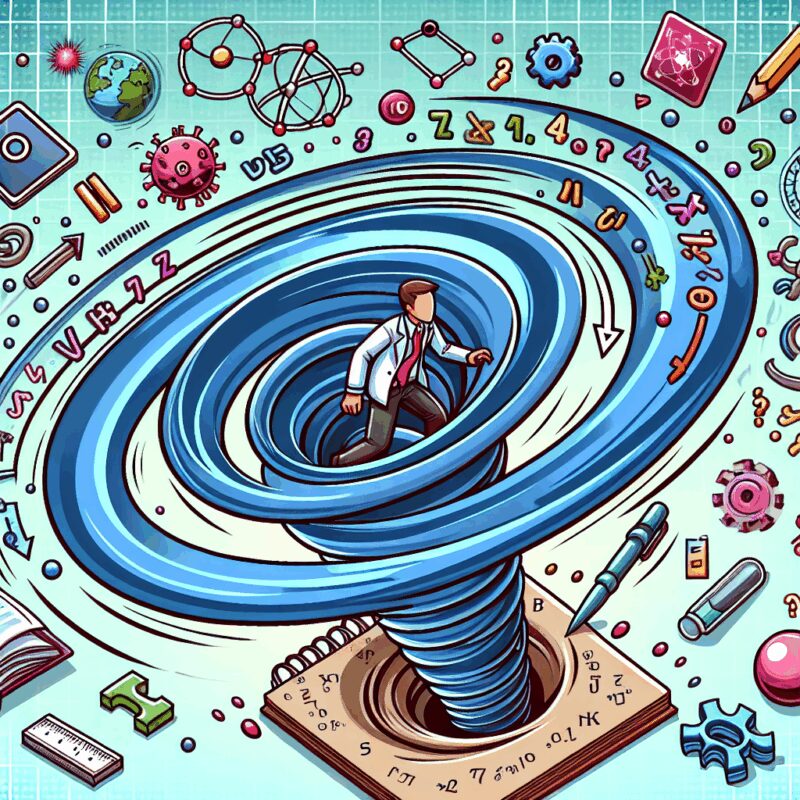
Understanding the Basics
The Kosterlitz-Thouless transition might sound like a mouthful, but it’s a fascinating concept in physics that explores how certain materials behave in two dimensions. Imagine a flat surface, like a piece of paper. In the world of physics, two-dimensional systems are like this flat paper, where everything happens on the surface without any depth. This transition is named after two brilliant scientists, J. Michael Kosterlitz and David J. Thouless, who discovered it. They even won a Nobel Prize in Physics in 2016 for their work! To understand this transition, think about how a sheet of ice forms on a pond. At higher temperatures, the water molecules are moving too much to form a stable ice layer. But as it gets colder, they slow down and start to lock into place, forming ice. The Kosterlitz-Thouless transition describes a similar kind of change, but in two-dimensional systems and without the formation of a solid. Instead, it’s all about how certain properties emerge or disappear as the temperature changes.
What is a Phase Transition?
Before diving deeper, it’s essential to grasp what a phase transition is. In everyday life, phase transitions are quite common. Consider water turning into ice or steam. These changes are phase transitions, where a substance changes from one state of matter to another. The Kosterlitz-Thouless transition is a special kind of phase transition that occurs in two-dimensional systems. It’s unique because it doesn’t involve a change in the state of matter, like from liquid to solid. Instead, it involves a change in the way particles are organized and interact with each other. Imagine a group of people at a party. At first, everyone is mingling randomly. As the party goes on, people might start forming circles or lines, creating patterns in their interactions. The Kosterlitz-Thouless transition is similar, where particles in a system start organizing themselves in a new way as the temperature changes.
Preserving Superposition and Entanglement in Quantum ComputingVortices and Their Role
To truly appreciate the Kosterlitz-Thouless transition, the concept of vortices is key. Vortices are like tiny whirlwinds or tornadoes, but they occur at a microscopic level in materials. Imagine stirring a cup of coffee with a spoon; the swirling motion you see is a vortex. In two-dimensional systems, vortices play a crucial role in how the system behaves. At high temperatures, vortices and anti-vortices (opposite spinning whirlwinds) are formed in pairs and move freely. This movement keeps the system in a disordered state. However, as the temperature drops, something interesting happens. These vortex pairs start to bind together more tightly, restricting their movement and leading to a more ordered state. This change in behavior without a change in the state of matter is what defines the Kosterlitz-Thouless transition.
Vortices in Everyday Life
Vortices are not just a concept confined to physics labs. They can be observed in daily life, like the whirlpool that forms when pulling the plug in a bathtub or the rotating winds of a hurricane. These everyday examples help in visualizing how vortices function in two-dimensional systems. In the Kosterlitz-Thouless transition, these vortices and their movements are crucial. At high temperatures, the free movement of vortices disrupts the order. But as it cools, the binding of these vortices into pairs brings about a new order, demonstrating the transition’s unique nature.
Preserving Superposition and Entanglement in Quantum Computing
Mathematical Basis of GRW Interpretation for Wave Function CollapseApplications in Technology
The Kosterlitz-Thouless transition isn’t just a theoretical concept; it has practical applications in the world of technology. One of the most exciting areas is in the development of thin films and superconductors. Thin films are used in everything from solar panels to smartphone screens, and understanding their behavior at different temperatures is crucial for improving their efficiency and durability. Superconductors, on the other hand, are materials that can conduct electricity without any resistance when cooled to very low temperatures. The Kosterlitz-Thouless transition helps scientists understand how to enhance these materials’ properties, leading to potential breakthroughs in energy transmission and magnetic levitation technologies.
Future Possibilities
The implications of the Kosterlitz-Thouless transition extend beyond current technology. As research continues, new materials and systems are being developed that could revolutionize industries. Imagine computers that are faster and more efficient or medical devices that operate with unprecedented precision. The insights gained from studying this transition could pave the way for such advancements, making it a cornerstone of future technological progress.
Boundary State Protection Principle in Topological InsulatorsConclusion
The Kosterlitz-Thouless transition offers a glimpse into the fascinating world of two-dimensional systems and their unique behaviors. By understanding vortices and how they influence material properties, scientists can unlock new potential in technology and materials science. While the transition might seem complex, breaking it down into everyday analogies can make it accessible to everyone, from students to seasoned physicists. This transition is more than just a scientific curiosity; it’s a gateway to innovation and discovery, demonstrating the power and elegance of physics in understanding the universe.
관련 글: Preserving Superposition and Entanglement in Quantum Computing
Quantum Electrodynamic Interpretation of Van der Waals Interaction
[…] Kosterlitz-Thouless Transition in Two-Dimensional Physical Systems […]